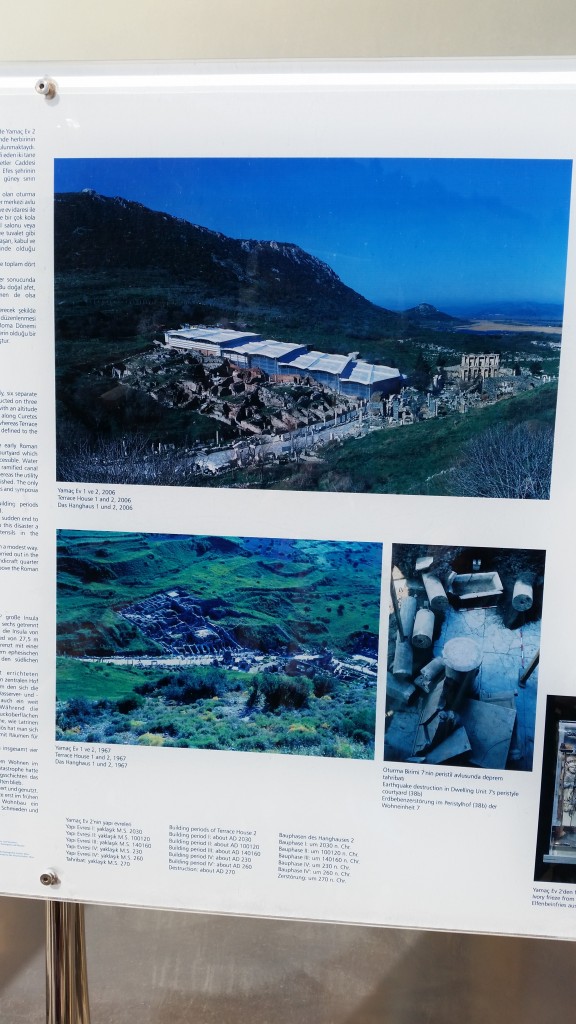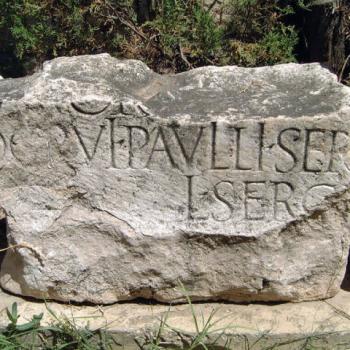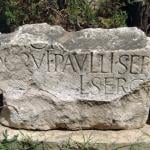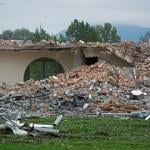One of the more spectacular digs in all of Turkey has been the slope house dig, right in the middle of old Ephesos. We will now walk a little further down the hill, over mosaic inlaid streets, and enter the domain of the wealthy, and their penthouses downtown, seven of them, to be exact, and on three levels, with the two houses at the top level being the largest– like modern penthouses.
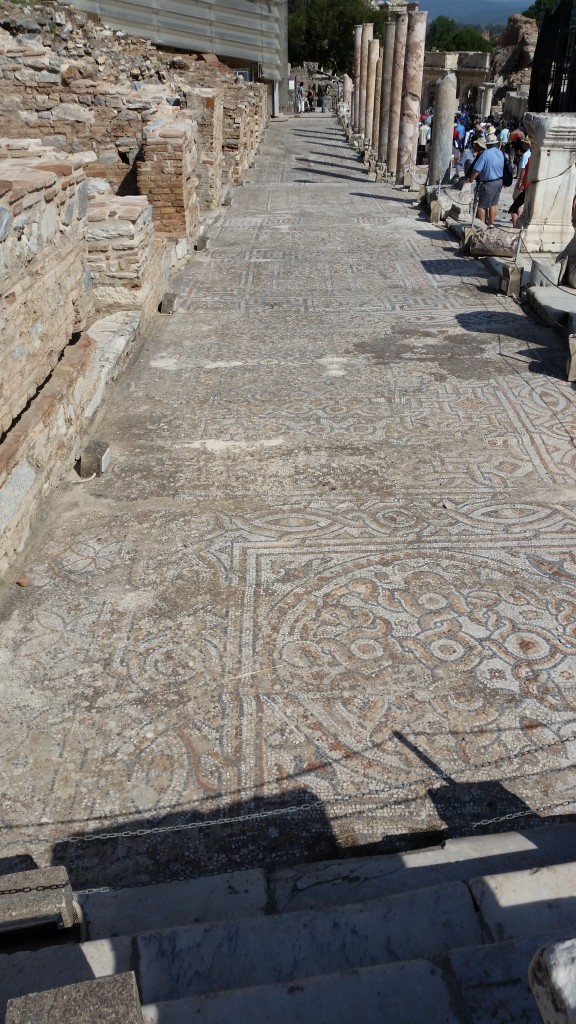
Probably 95% of the wealth in antiquity was controlled by the upper 2% of the population, and they lived well, very well, as you will see. They had indoor plumbing, they had marble lined rooms and meeting and dining halls (there is even a basilica in one). They had frescoed walls with pictures of gods, animals, poets, playwrights, philosophers. These houses were all being built in the first through third centuries, and were quickly destroyed by the catastrophic earthquake in 270 A.D.
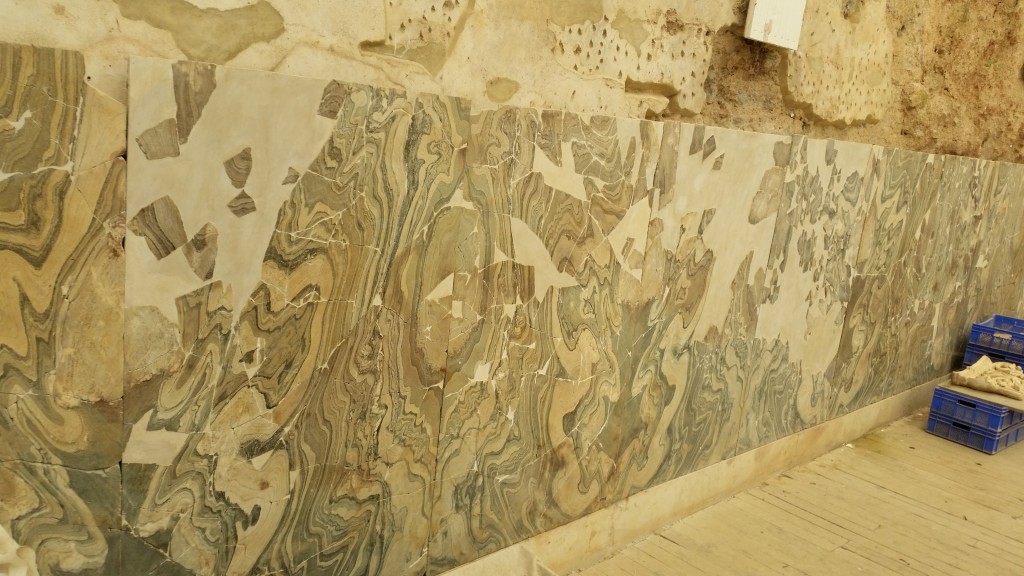
At the first level one finds a large room with marble inlaid walls. Here the Austrian team is doing the jigsaw puzzle thing of putting all those marble fragments back together, sometimes with spectacular results.
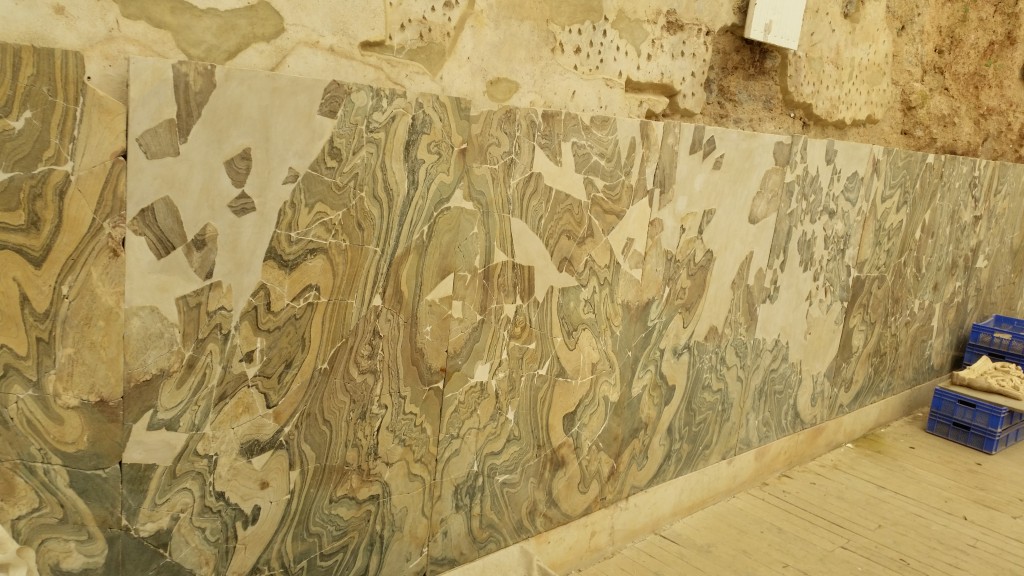
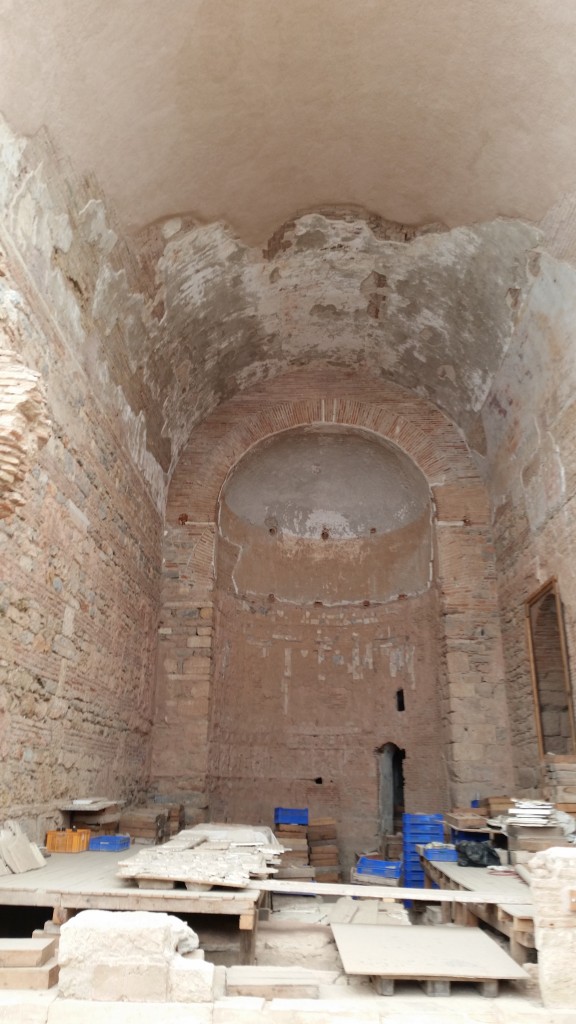

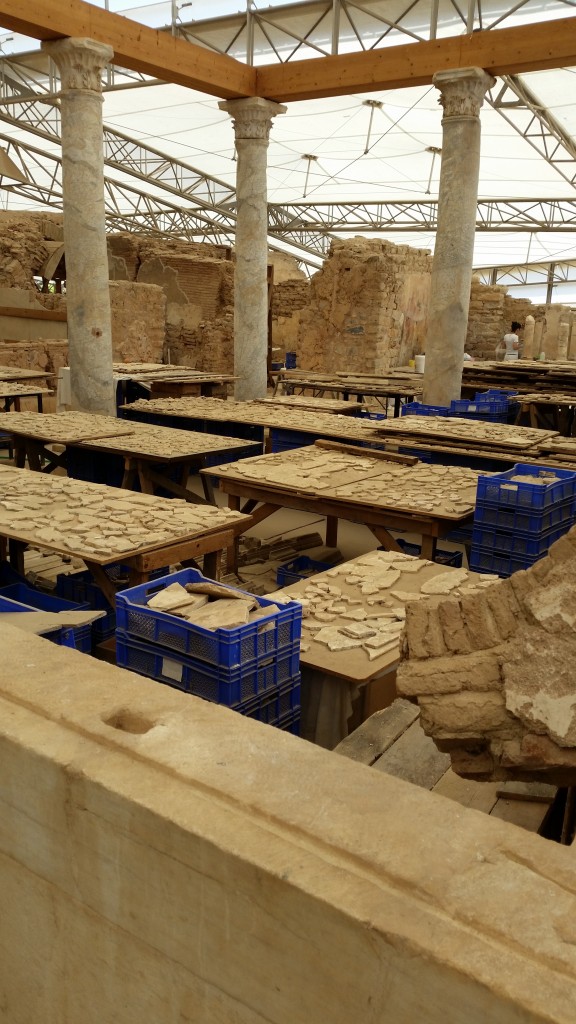
There was also an ivory two dimensional frieze in House 2,
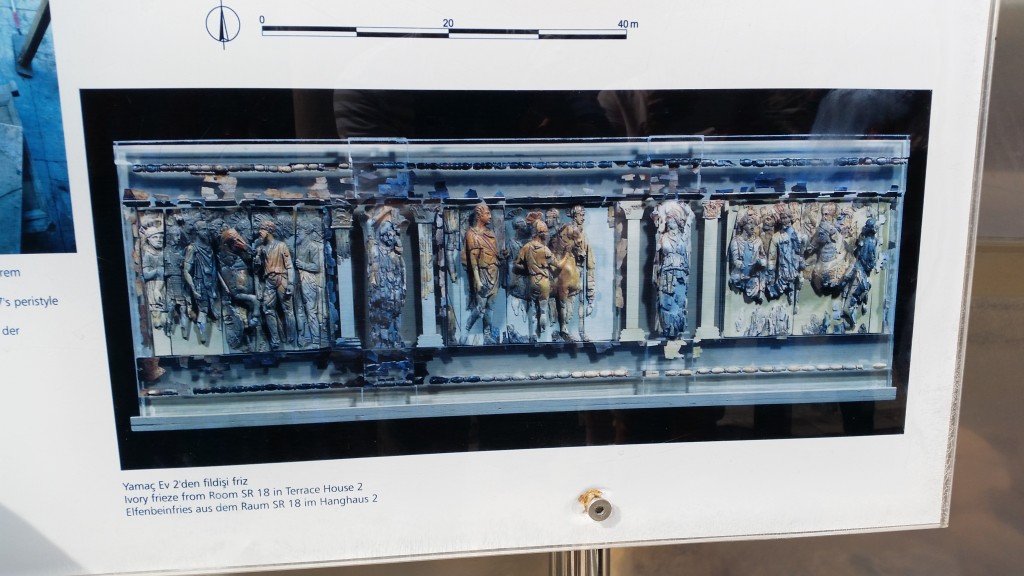
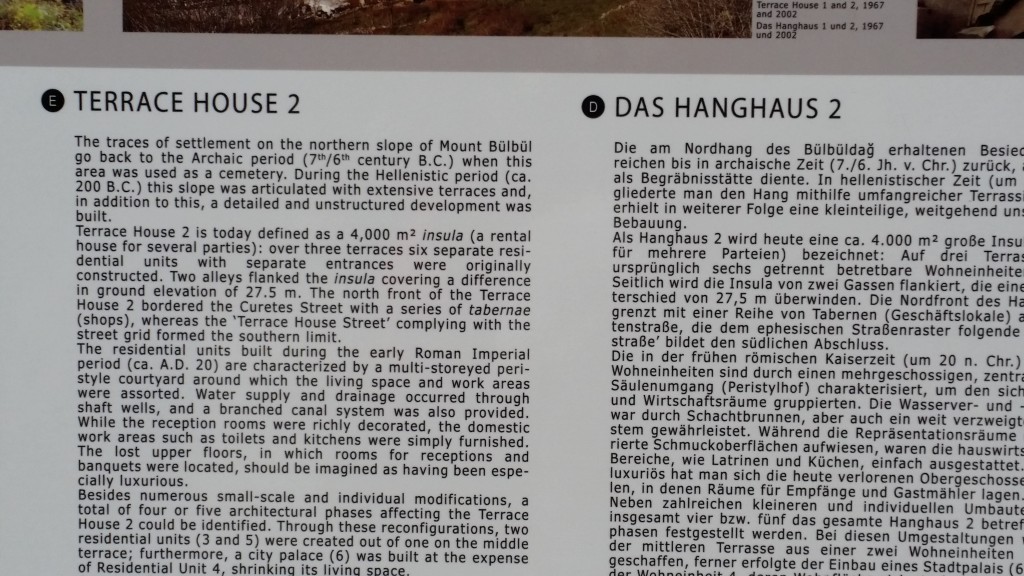
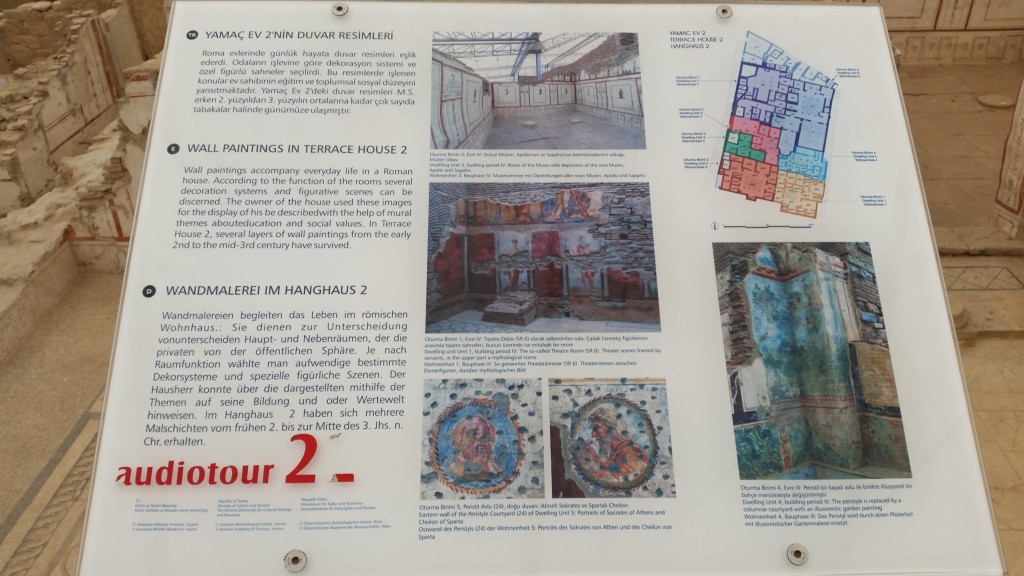
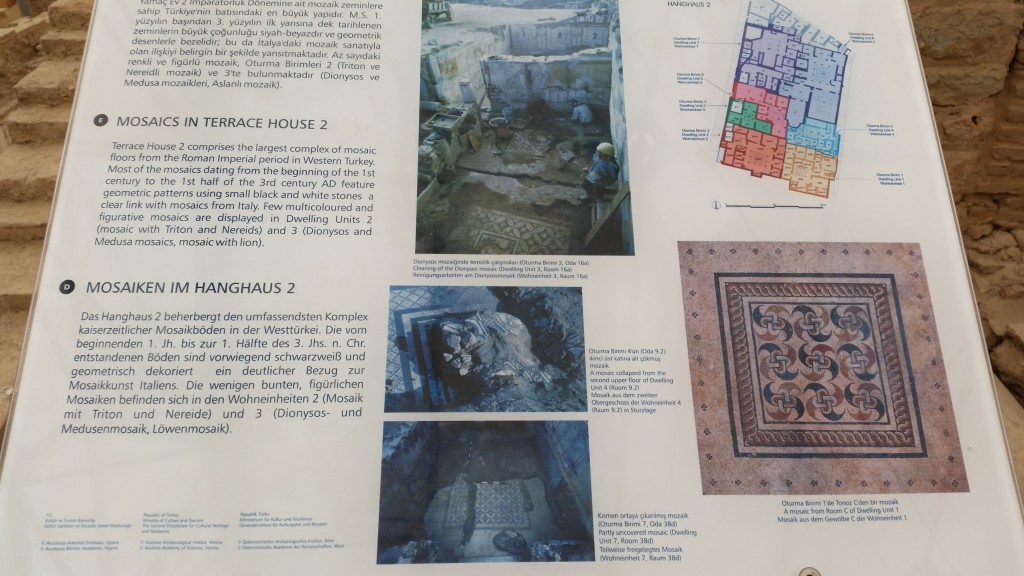
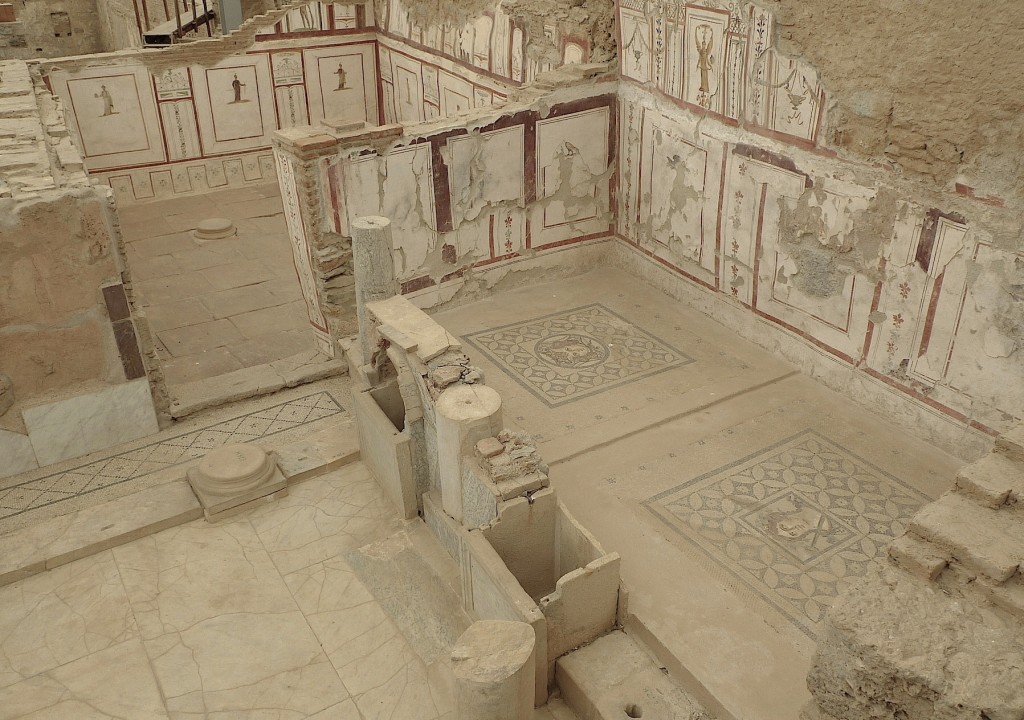
Here was a basilica or barrel-vaulted meeting room,
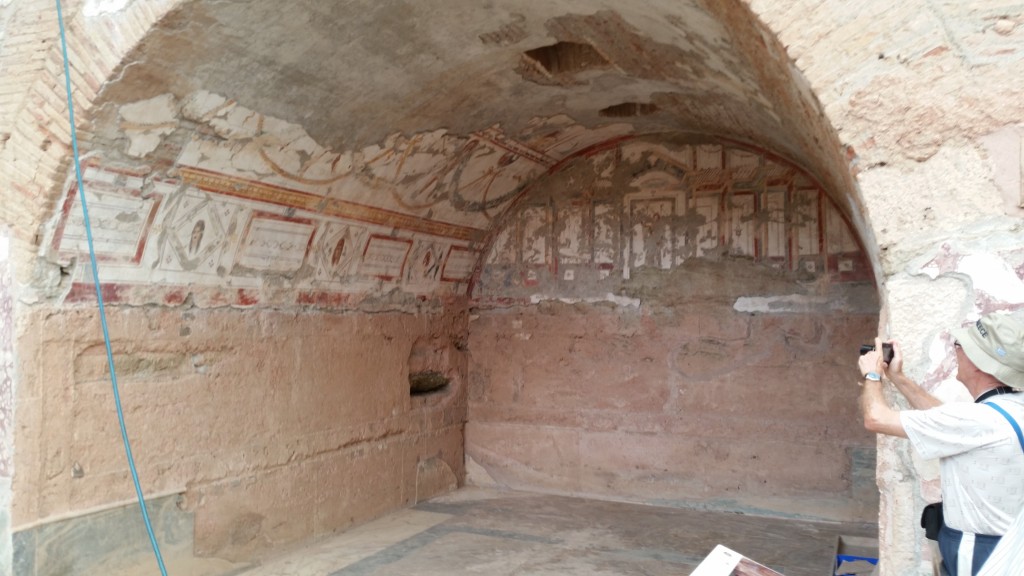
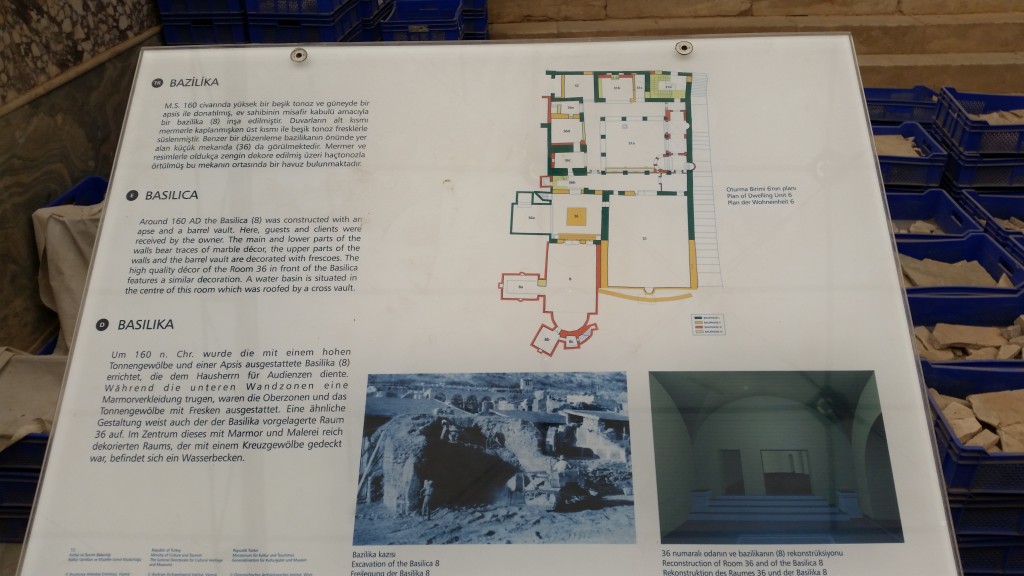
There is interesting graffiti that has been found. Have a look at the below (and in case you are wondering, an as/ass is a unit of money).

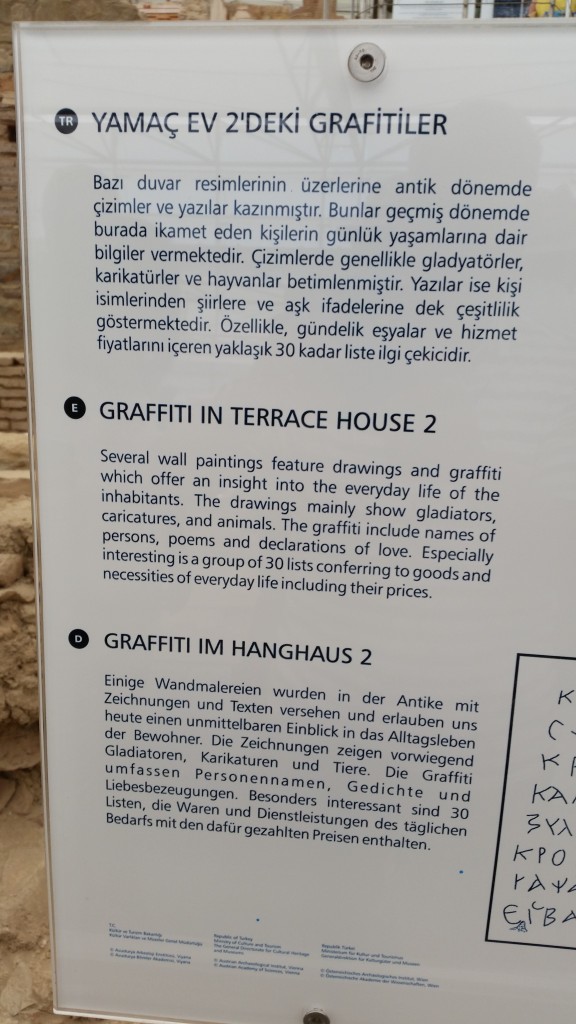
Here are some more of the spectacular mosaic floors, and frescoed walls.
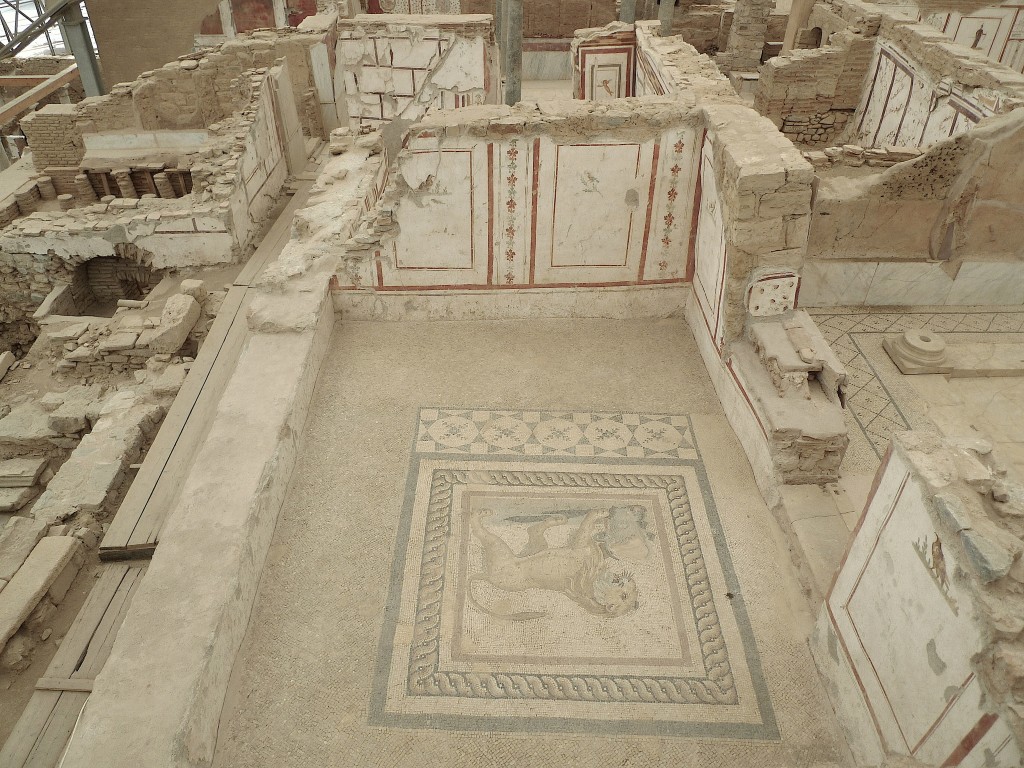
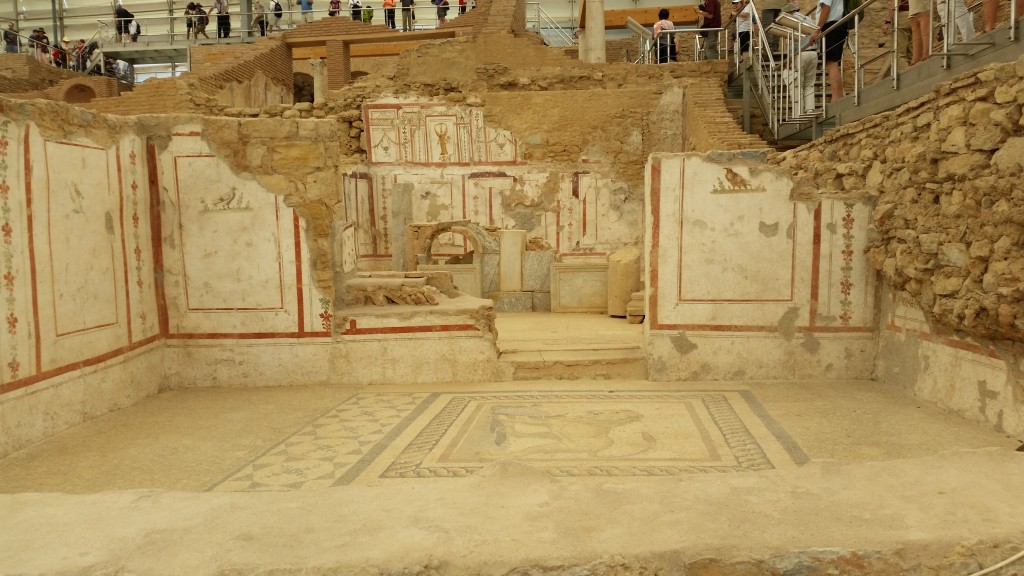
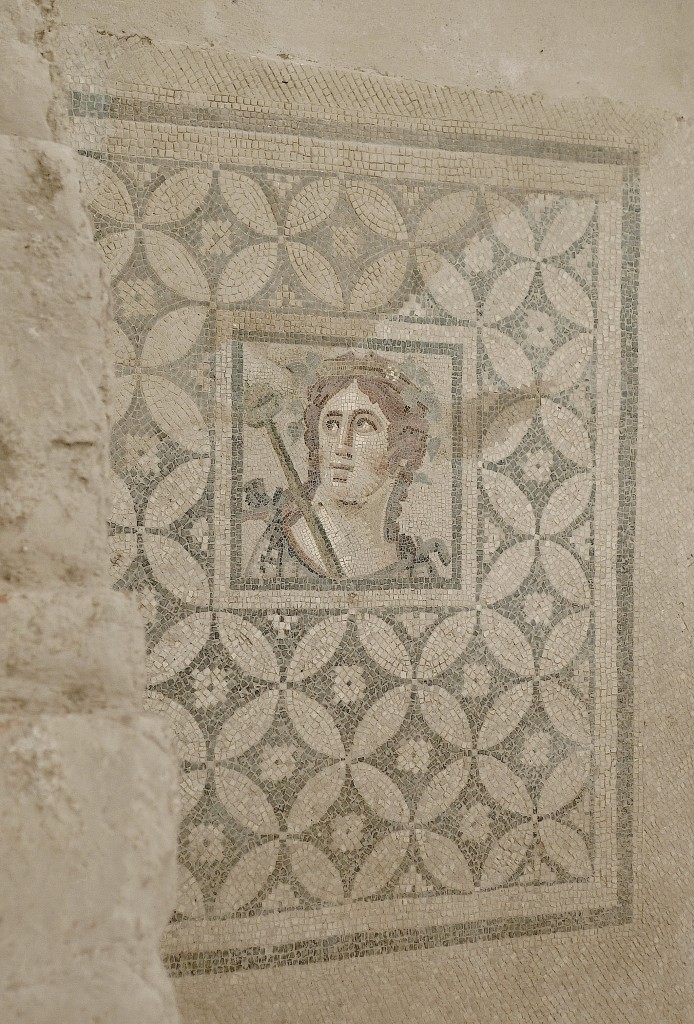

When one gets to the top level, with House 6, one is truly in a penthouse, which the Austrians suggest is like a palace. From here one can see well to the lower levels.
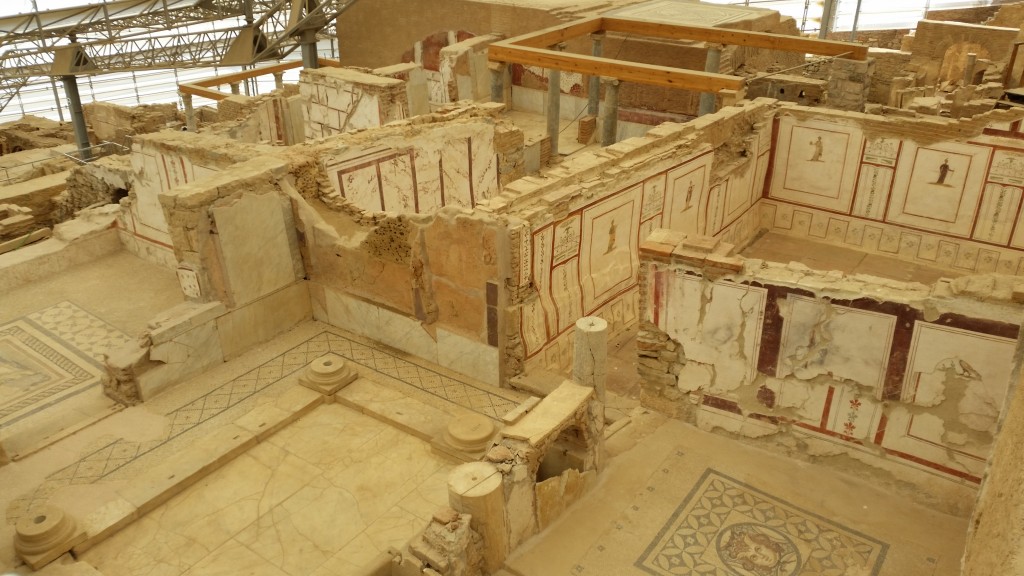
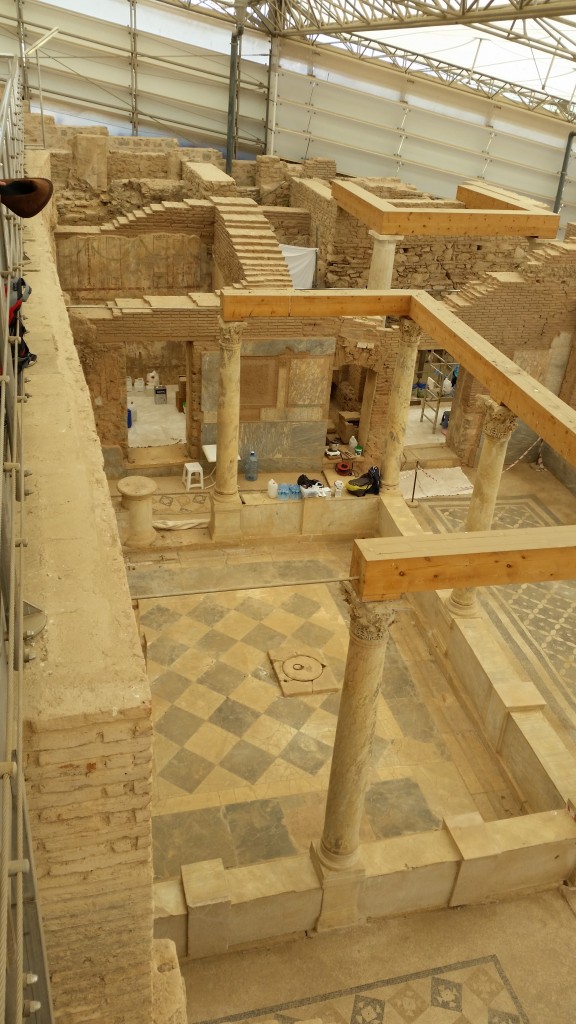
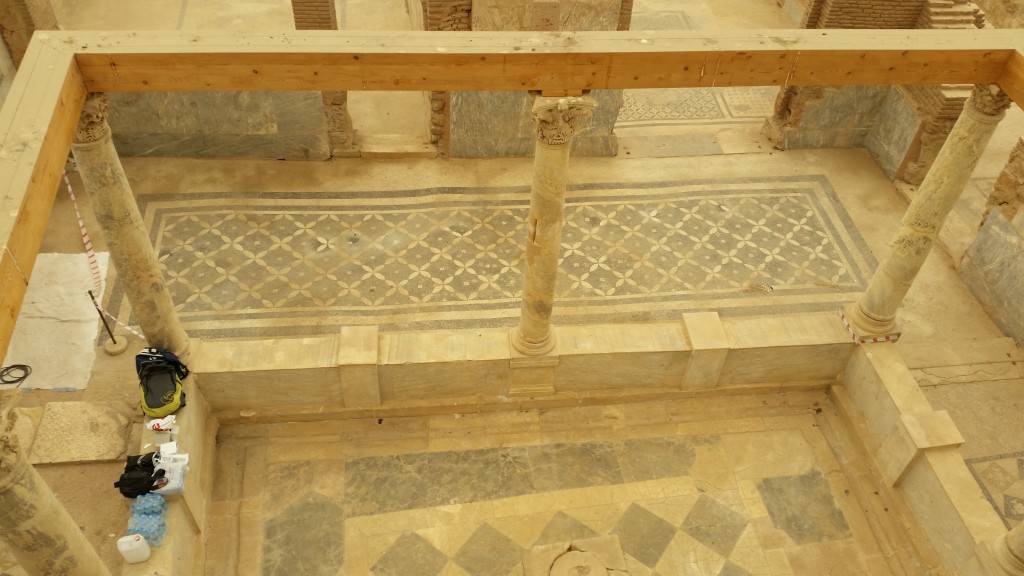
And then there is the guy who lived at the very top, in House 6, which the Austrians call palace-like. His name was C. Flavius Furius Aptus, and he would indeed be furious if he knew we broke into his pad. He looked something like this.
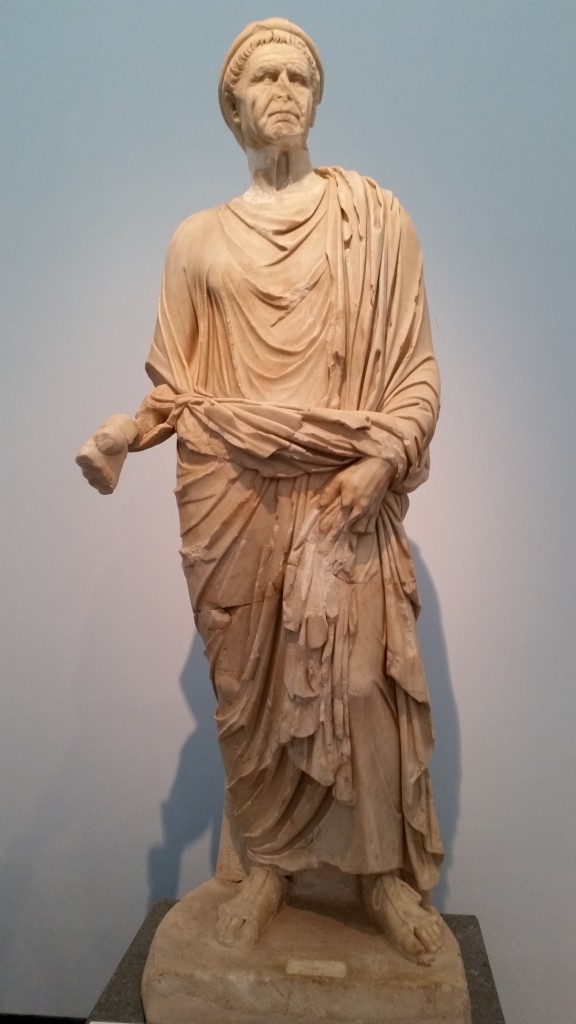
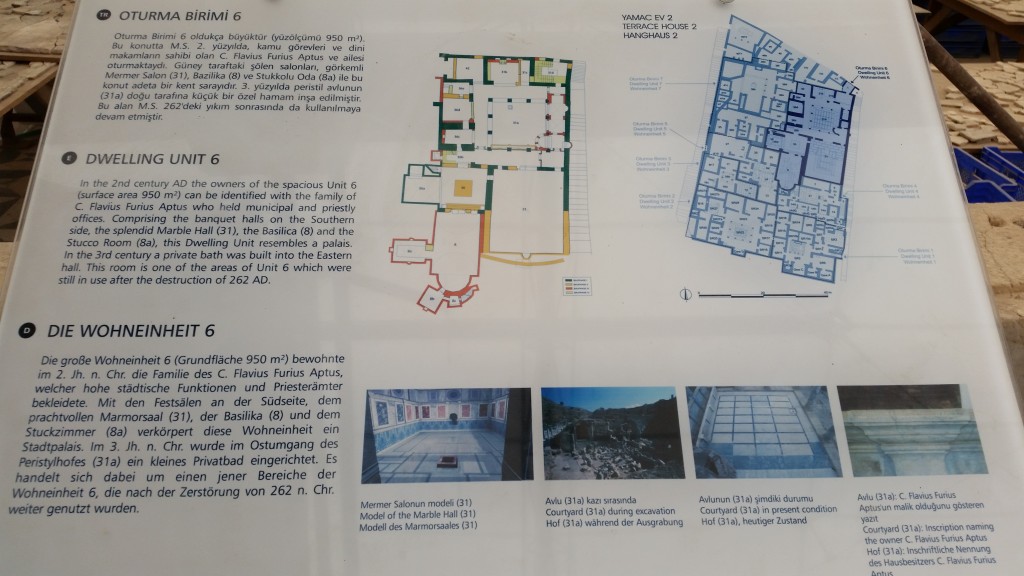
Here’s his man cave, complete with painted walls,
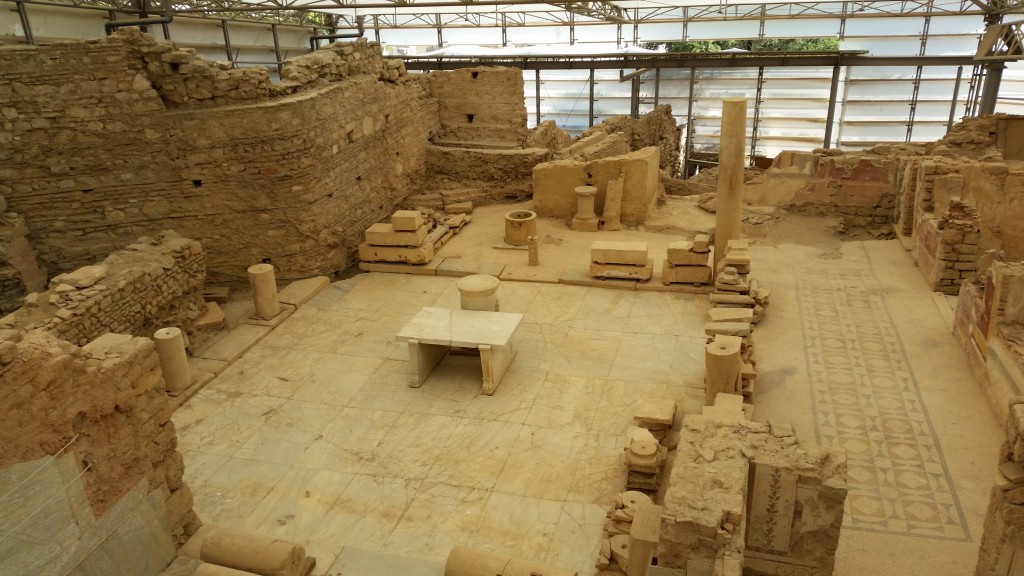
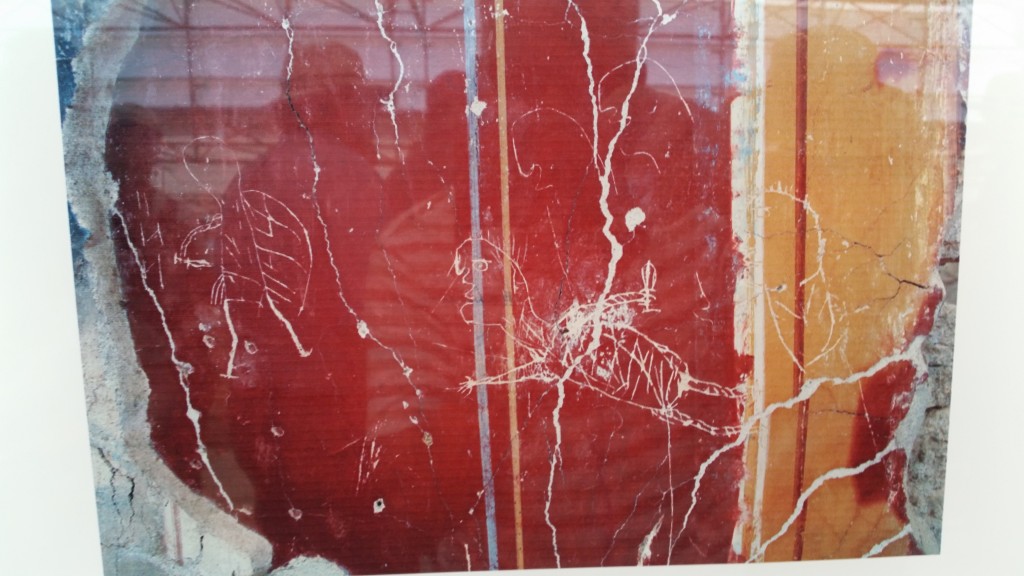
It was a colorful pad. Of what relevance is this to NT studies? Much in every regard. Remember the Asiarches, the ones who warned Paul it was time to get the heck out of Dodge? Well they lived in houses like this, indeed they may have lived in these very houses in the first century. The fact that Paul was friends with any of them says reams about Paul. He was in some respects a high status person, a Roman citizen, fluent in various languages, and known to the authorities in town. Notice that the riot goes nowhere, and the clerk is having none of it. Notice the same thing happens in Corinth. What does this tell you about Paul? Think on these things.


